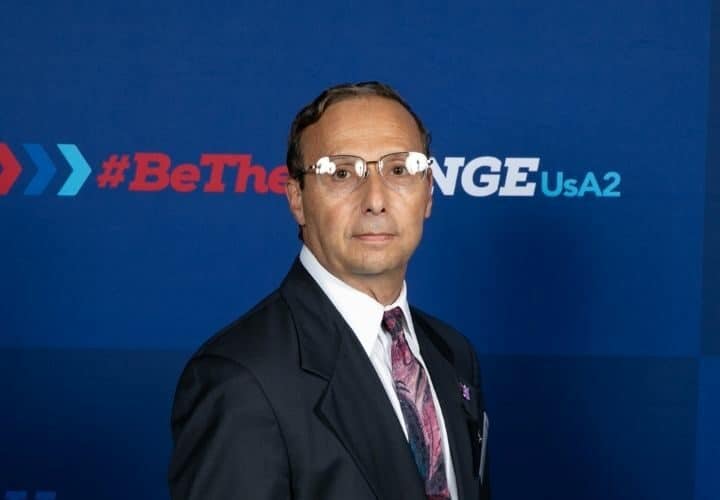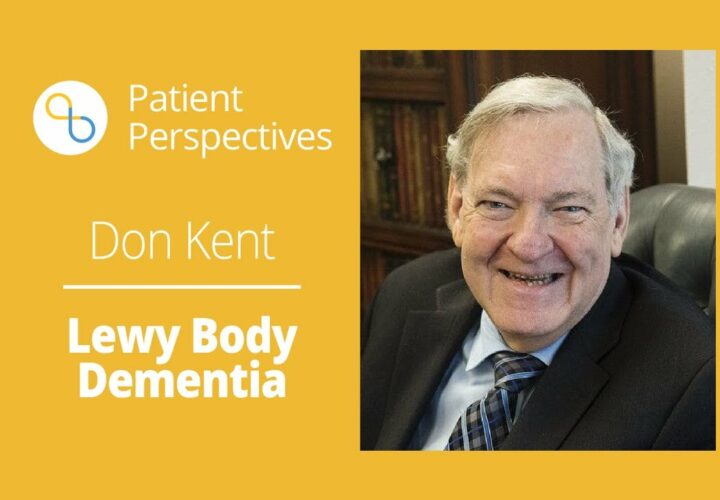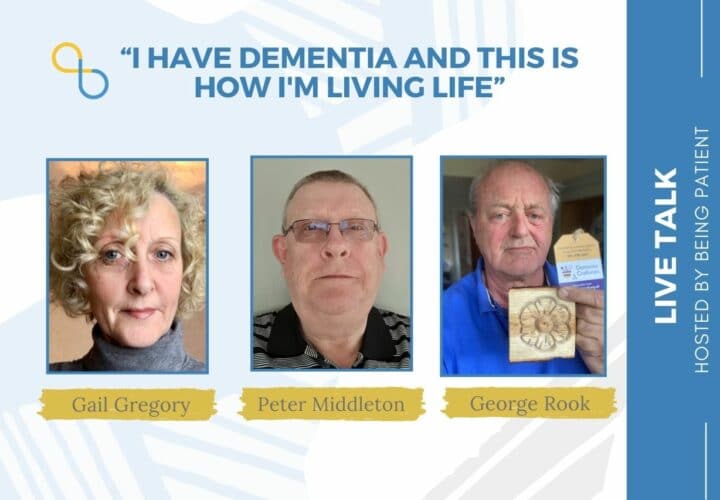Plagued by dementia symptoms for years, Michael Ellenbogen discusses the ongoing ambiguity surrounding his Alzheimer’s diagnosis.
Michael Ellenbogen was reaching the height of his career when he started to experience symptoms of cognitive impairment. After a long-drawn process, he was finally diagnosed with early-onset Alzheimer’s about a decade later in 2008. For Ellenbogen, who was 49 years old at the time, it was a relief to finally know what was wrong.
But years later, he received a negative result from a brain scan that detects beta-amyloid plaques, a key Alzheimer’s biomarker. To date, Ellenbogen tells Being Patient, it remains unclear exactly which form of dementia he has, and the answer may come only when he undergoes an autopsy.
Being Patient spoke with Ellenbogen, author of From the Corner Office to Alzheimer’s (2013), about the challenges he has faced in pursuing an accurate dementia diagnosis, and his take on what it means to live well with dementia.
Being Patient: You began experiencing symptoms of cognitive impairment at about the age of 39. Can you tell us about some of these challenges?
Michael Ellenbogen: I was just starting to peak in my career. I worked for a Fortune 500 company [of] 70,000 people. I was in charge of data centers, all the infrastructure for the buildings up and down the East Coast.
But [I started] struggling to come up with the right creative ideas that [I] always had, having issues of not remembering employees by their first names, struggling with four-digit extension numbers that I used regularly or acronyms in my field. I was the go-to guy and I [was] struggling to come up with these things. Everybody used to use a copier and the fax machine and I would struggle to even use something that simple. I mentioned to the one or two people in my workforce that were close to me and they said, ‘Don’t worry about it. That’s just a part of normal aging.’
For a while, I blew it off, but it came too frequently. I started writing things down and that [was] when I realized, ‘Wow, this is happening an awful lot. I got to do something about it.’
Being Patient: Then, it took about 10 years until you received your official diagnosis of early-onset Alzheimer’s. Can you share with us how you navigated the medical system throughout all those years?
Michael Ellenbogen: My regular doctor didn’t think there was any real issue. He did decide to send me to some doctors and I went through all kinds of testing. It came back that I had something, but they didn’t realize what it was. As I continued going to see doctors, one doctor came to the conclusion that I was stressed and depressed.
I finally ended up seeing a doctor in the University of Pennsylvania because of his expertise. [During the medical test], he asked me who the president was. I was into politics and everything. I couldn’t tell who the president was. I broke down crying in his office. After meeting with him a few times, I realized I wasn’t getting anywhere.
I got so frustrated with the medical community. I gave up, and sadly to say, I ended up losing my job. I always had the feeling that the people in my workforce [knew I was working with doctors and that I had issues]. The thing they fired me for, [in] other parts of the organization, they just slapped [people] on the hand.
I ended up talking to a past boss of mine, and he was actually [a high-level manager] in another major company. I told him about my situation. I was struggling. I told him I was looking for a job, I needed something. He was so kind. He found an opportunity for me within the organization as a contractor. He put me in touch with the people who were hiring and I ended up getting the job. What was supposed to be a six month gig turned out to be almost four years.
As soon as I got into that organization, I realized how much I really struggled to learn. I was really having all kinds of issues, trying to understand what they were telling me. This job was a simple job. I took such detailed notes that showed me how to do everything step by step by step. But I found myself weeks and weeks and weeks later, following step by step by step again.
I realized I had to go back to the doctors. So I started all over again with new medical doctors. One of the doctors said [to my wife], ‘Have you ever heard of Alzheimer’s?’ My wife said, ‘Yeah, what about it?’ Keep in mind my wife [was] a medical nurse [at the time]. He said, ‘I think your husband may have Alzheimer’s disease. You might want to get that investigated.’
We took his words, went back to my neurologist at the time and shared the records with him. Sure enough, he ran [a fluorodeoxyglucose-positron emission tomography, or FDG PET scan]. It came back indicating that I had what they would look for in people who might have Alzheimer’s. I ended up getting sent to another neurologist, and that person came to the conclusion that that’s most likely what I had.
[I was] sent to other doctors and they were leaning towards either semantic dementia or Alzheimer’s. It just so happened that the National Institutes of Health (NIH) was doing a medical trial and looking for people who had semantic dementia. I sent my records to NIH and I was fortunate that I was asked at their expense to come down to be at NIH.
[The doctors] ran every possible type of study you could imagine. They thought that I did not have semantic dementia, but they were leaning towards Alzheimer’s disease. The medical doctors recommended that I proceed further with my regular doctor.
My regular doctor came back conclusively that I did have Alzheimer’s. [The doctor] recommended that I definitely should no longer work because I was struggling and having all these difficulties. I ended up filing with SSDI (Social Security Disability Insurance) and sadly to say, that took a long time. I had to get lawyers to help me out.
Being Patient: Following your diagnosis, you joined many different Alzheimer’s studies. In one study by Avid Radiopharmaceuticals, a subsidiary of Eli Lilly, researchers were identifying subjects for clinical trials. After signing up for the study, you underwent an amyloid PET scan, which measures amyloid plaques. Can you tell us about this experience and how you felt when you received the amyloid PET scan result?
Michael Ellenbogen: They wanted to do this amyloid PET scan on me before they would have me continue into the full trial process and invest all that time and money into me. Surprisingly, it came back that I did not have amyloid. That was a great relief on the one hand, but [it also] left me feeling very weird, because for years, I was telling the entire world that I had Alzheimer’s.
I am lucky because I [know] a lot of key people all over the world who are in top positions in the dementia field. I [asked them], ‘Look, this is what’s happening, what do you think?’ They said, ‘Mike, you’re falling into a new category called SNAP (suspected non-Alzheimer’s disease pathophysiology).’
I had already been talking with many top doctors in the world, and some have already believed that I did not have Alzheimer’s. They believed I had semantic dementia. Another doctor who was already seeing me said it’s a possibility it’s Alzheimer’s, or it could be semantic dementia, which falls under the FTD (frontotemporal dementia) category. He goes, ‘We just don’t know yet.’
But I’ve learned that people who had one type of dementia listed on their death certificate [often have] a mixed form of dementia [at autopsy]. I may end up having multiple types of dementia, but [I’m] not going to know that until [I get an autopsy]. I guess we’ll have to wait till I’m dead.
Being Patient: How do you make sense of all this uncertainty about which form of dementia you have?
Michael Ellenbogen: The thing that’s important to know is it’s progressive and there will be an end to my life because of it. But I’ve also got a great appreciation for the science and how complex [dementia] is. Because of that, it makes it very easy for me to live with not knowing.
Being Patient: We often talk about how to live well with dementia. I was wondering what that phrase means to you?
Michael Ellenbogen: [I began talking about] living life to the fullest with dementia about 10 years ago. I realized then that I [didn’t] have a lot of time, so I got to figure out how to enjoy the rest of my life as quickly as I can. So I created this bucket list, and I went skydiving, all these great things. It was fabulous.
Do your homework and understand what’s around the corner with this disease. It’s like a curvy road and you’re going to hit obstacles, but you’ve got to figure out how to get around them. If you expect the worst of the disease, then if you have a good day, it’s a great day.
I’m lucky because I surround myself with a lot of great people: my wife, my daughter, and they all look after me. I have all these people that I’ve been advocating with and that gives me a sense of purpose. I was a workaholic. I needed something to do non-stop. Now, that advocacy is my non-stop.
The interview has been edited for length and clarity.
Contact Nicholas Chan at nicholas@beingpatient.com




